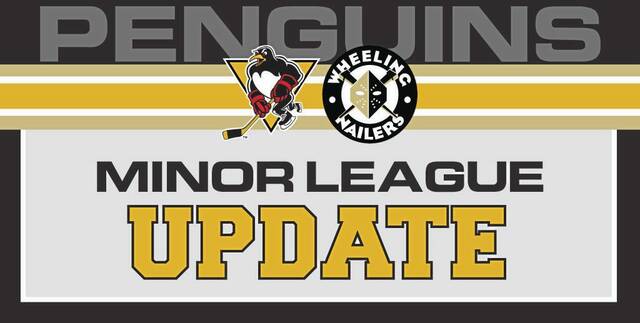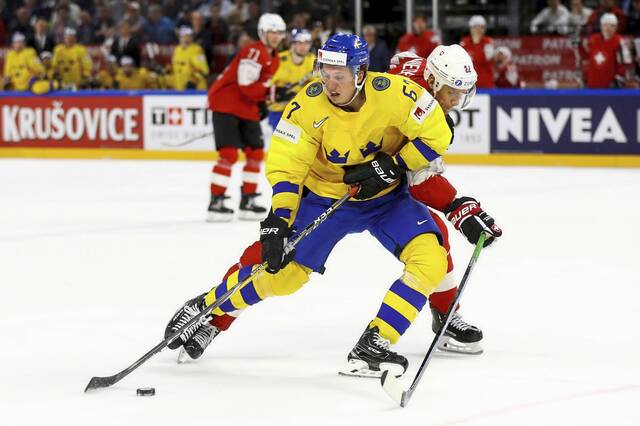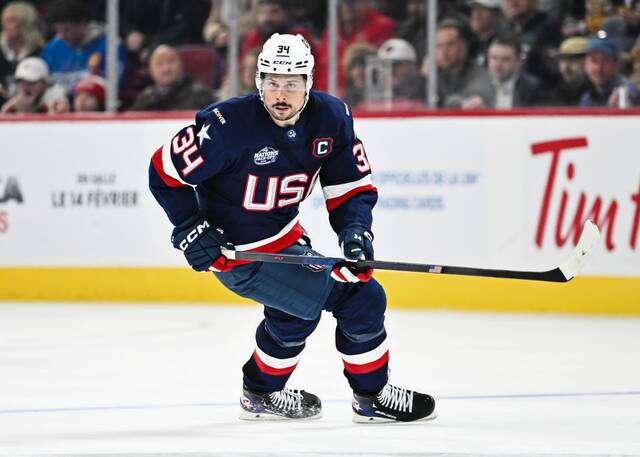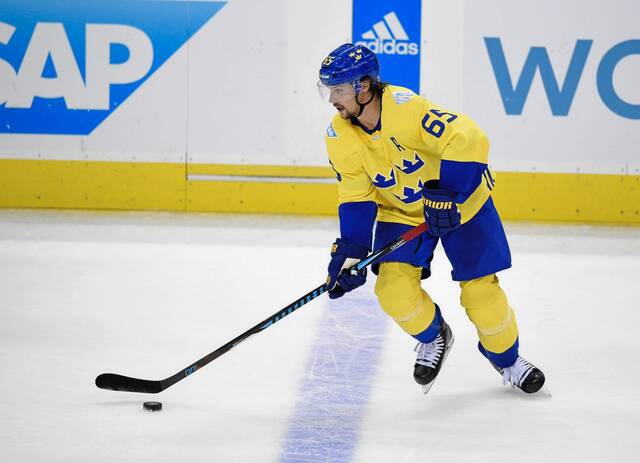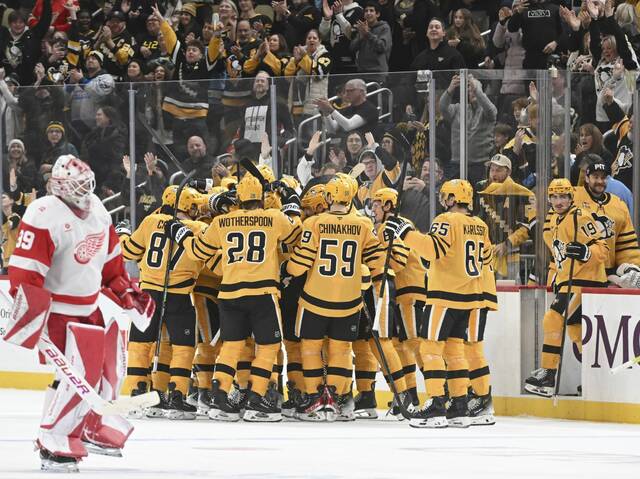A few games into the first round of the NHL playoffs, fans in Pittsburgh are still grappling with the Penguins’ disappointing year-long performance, which kept the team out of the postseason for the first time since 2006.
In media circles and across the spectrum of armchair hockey strategist diagnoses, the main reasons for the Penguins’ failures have been neatly laid out: inconsistent goaltending, lousy production from the team’s bottom-six forwards plus lackluster defense from often-injured players.
But do any of those deficient areas stick out in particular? In other words, was there one particular shortcoming that, more so than the Penguins’ others, sank the team?
On the note of banged-up defensemen, an under-discussed contributing factor to the Penguins’ failure to make the playoffs was the late-season injury to Marcus Pettersson.
The 26-year-old left the Penguins’ 6-0 loss to the Rangers on March 18 with an unspecified ailment, and, two days later, was placed on long-term injured reserve.
By the time he was activated for the team’s April 13 season finale at Columbus, a meaningless game played after the Penguins’ elimination from playoff consideration, he had missed 12 critical late-season contests.
“It (was) tough to sit on the sideline and watch,” Pettersson said. “Going through an injury that time of year, it’s never fun going through it. At that time of year, it’s tough to watch for sure.”
Pettersson, and no injured player, for that matter, should have to absorb criticism for missing time due to their bodies not being at 100% health.
Hockey is a violent game and injuries comprise part of the day-to-day reality of playing professionally.
But Pettersson going down when he did came at an inopportune time for the Penguins, who were navigating through a period without fellow blueliners Dmitry Kulikov (LTIR), Jeff Petry and Jan Rutta.
Ultimately, in Pettersson’s absence, the Penguins went 6-6 — not terrible, but not good enough to seize control of an Eastern Conference wild-card spot, which they missed by one point.
Thus, it is far from off-base to suggest that were Pettersson available down the final stretch, the Penguins might well have been able to earn one or two more points, squeaking them into the playoffs.
This past year was Pettersson’s fifth in a Penguins uniform, having been acquired by the team in a trade with Anaheim in 2018.
Beginning the campaign as the on-ice partner of Jeff Petry to form the Penguins’ second defensive pairing, Pettersson was promoted in early November to the top unit next to Kris Letang in place of the struggling Brian Dumoulin.
“I think Marcus has been our most consistent defenseman,” coach Mike Sullivan said at the time. “He’s playing that way game in and game out. He’s a real competitive guy. He’s a good two-way defenseman on both sides of the puck. He does everything pretty well. … I think he continues to bring consistency to his game.”
Consistency proved to be the key pillar to Pettersson’s game, and while his late-season injury limited him to 68 appearances (his career-high is 72, set last year), none of his fellow defensemen surpassed the steadiness he provided to the team’s blue line.
Pettersson averaged 20 minutes, 35 seconds of ice time, good for fourth-most on the team behind the likes of Letang, Petry and Dumoulin.
Offensively, Pettersson scored just one goal but set a career high with 23 assists. His plus-4 rating was second best among Penguins defensemen, trailing only P.O Joseph, and was fourth overall on the team.
All in all, Pettersson felt that he put together a strong season for the Penguins.
“It’s tough to kind of highlight yourself when you’re disappointed with how the season turned out in general, but I feel like in my mind and mentally, I took a good step trying to get a bigger role on the team,” Pettersson said. “I think I took that step and I played well.”
Pettersson is under contract with the Penguins through 2024-25, at which point he will complete a five-year deal that pays him $4.025 million per season, per Cap Friendly.
As the Penguins aim to get back into the postseason mix for next year, Pettersson looks to factor into the team’s plans to return to a more elite on-the-ice level.
“We’re really disappointed with where we’re at right now,” he said. “…We’ve talked at length about the inconsistency that we had for sure. I think that was a real problem for us that we’d stretch a few good games together and then a few bad ones.
“Instead of stopping the bleeding, we’d have a bad game or something like that. We could never get on a good run.”



